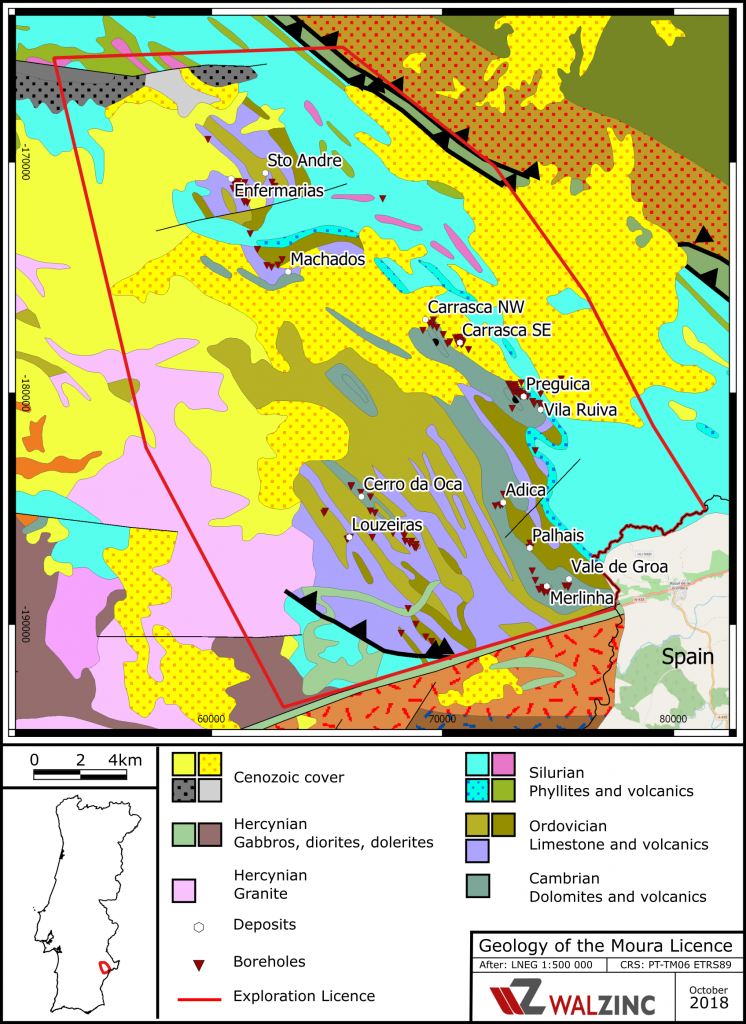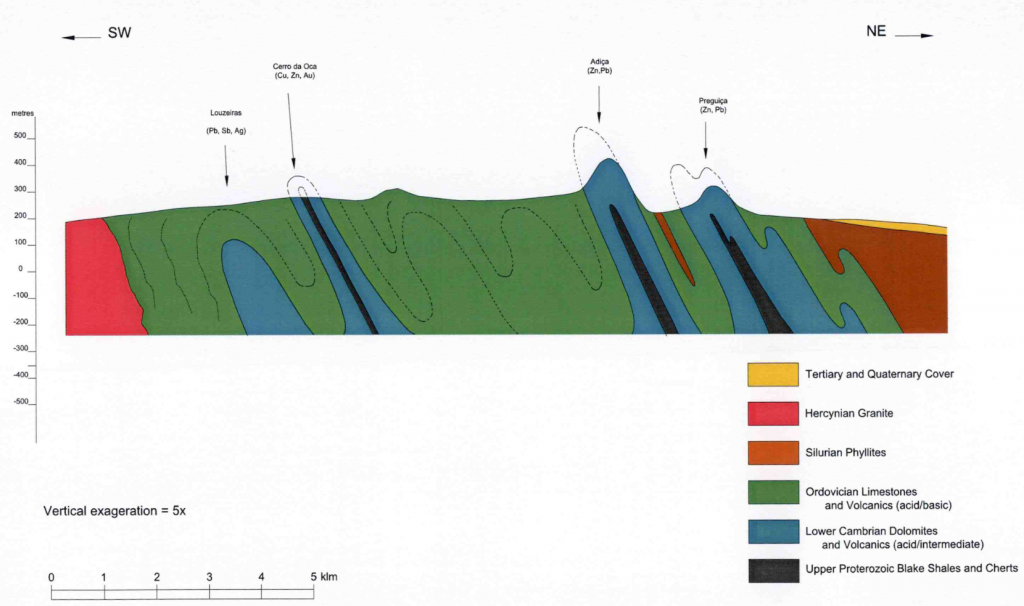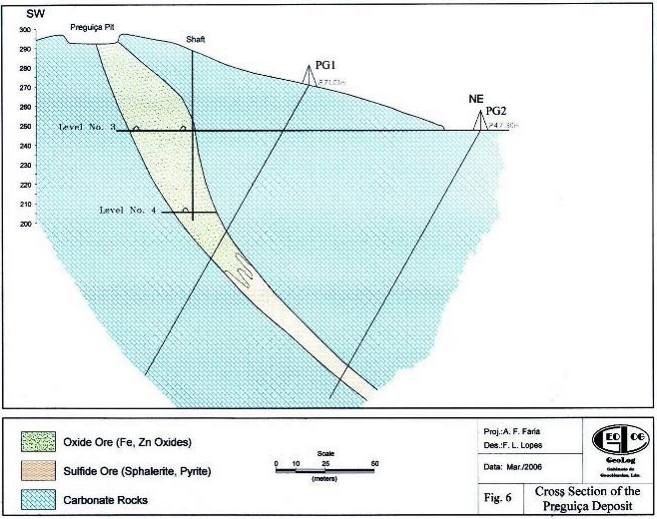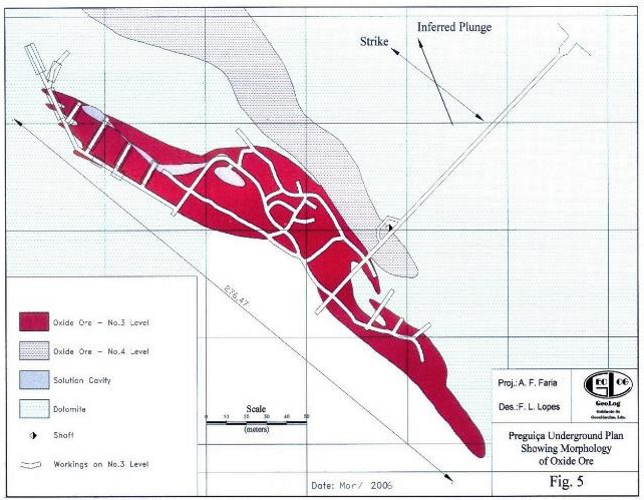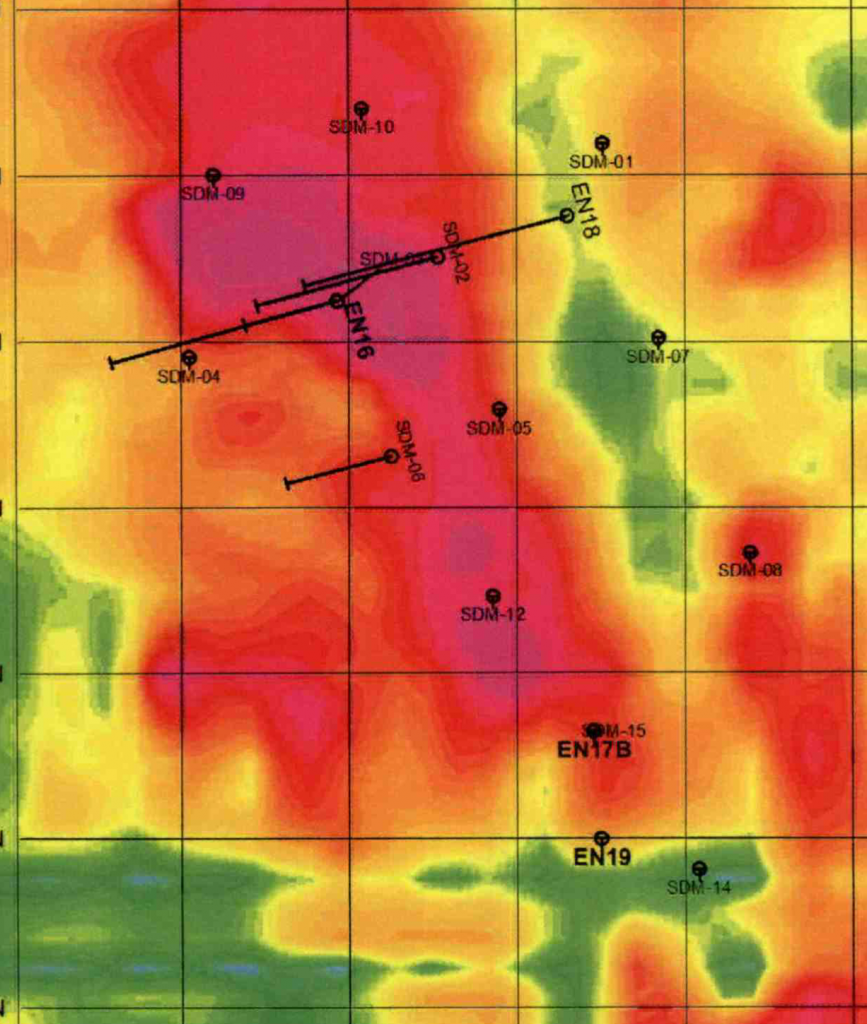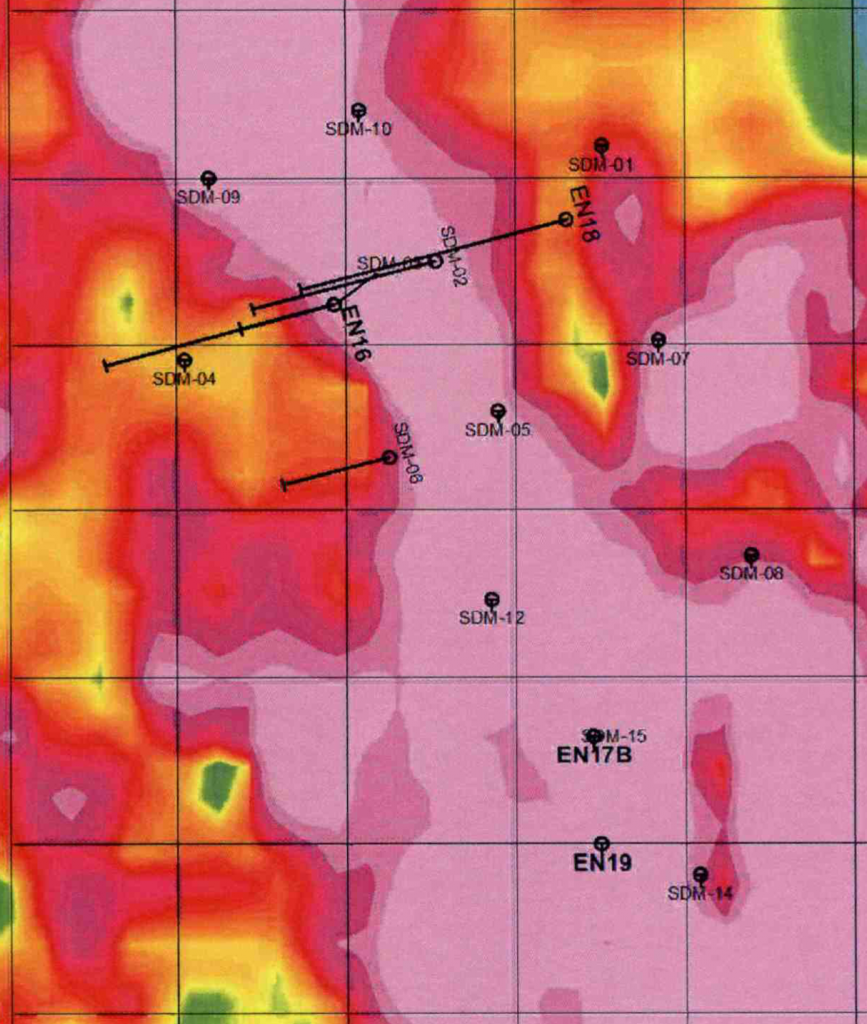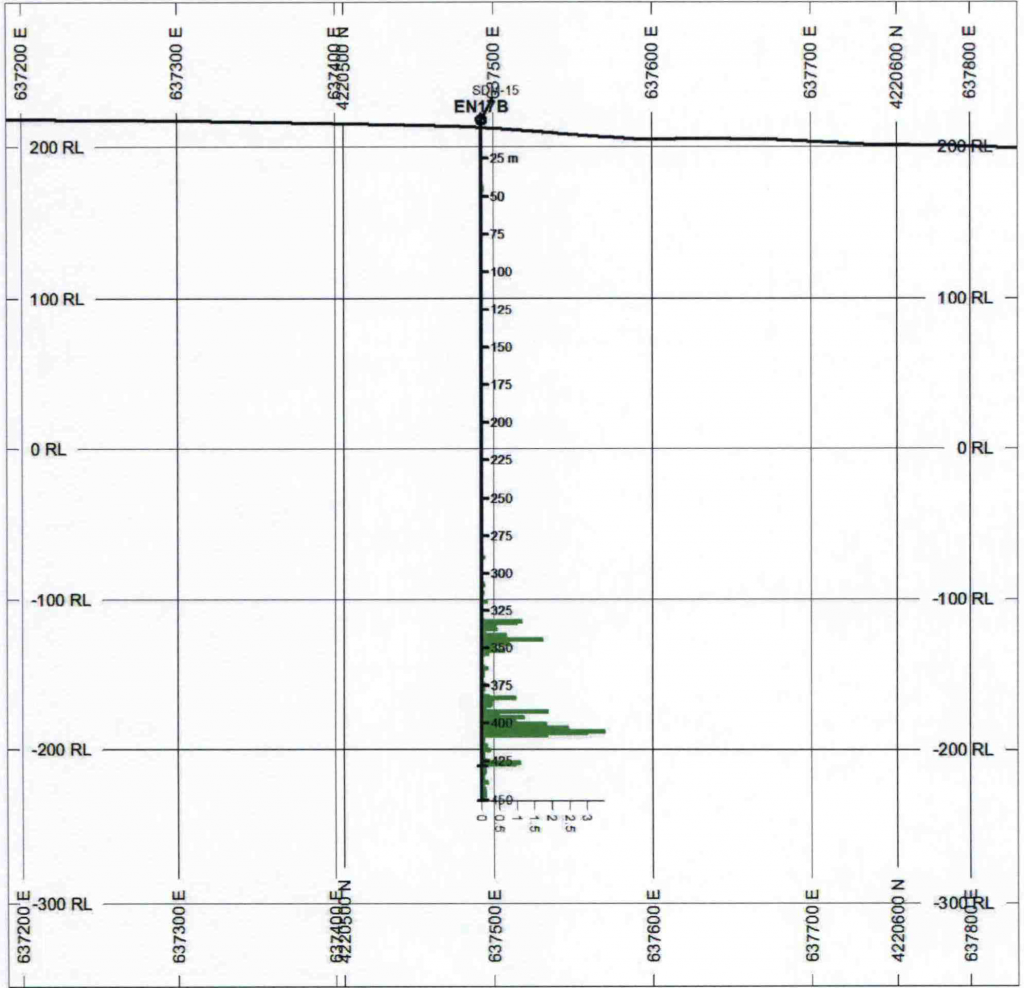Moura-Ficalho Project
Project highlights
- WalZinc owns 100% of the 499 km2 Moura-Ficalho exploration permit
- Historical, non-compliant resource estimates:
- Enfermarias deposit (4.6Mt @ 4.3% Zn+Pb)
- Preguica deposit (1Mt @ 10% Zn+Pb)
- Open at depth and along strike
- Many untested geochemical anomalies and large unexplored area along strike
- Excellent infrastructure
History
The Moura Licence Area has had an extended exploration history since the late 1940s, with an estimated 132 diamond drillholes having been completed in the area, about 30km in total. Apart from the exploration efforts since the 1940’s there has also been a number of actual exploitations, mostly on a smaller scale, with old workings dotting the licence area.
Geology & Mineralisation
Within the Moura licence, Zn-Pb mineralisation is hosted by Lower Paleozoic lithologies that outcrop throughout the 25km strike length of the Moura Licence within the Ossa Morena Zone of the Iberian Hercynian Orogen. These host rocks include carbonate sediments, acid to mafic volcanics and shales. Hercynian folding and shearing control the lithological distribution, locally resulting in stratigraphic repetitions.
The principal Zn mineralisation is stratabound to stratiform in character and is hosted by either Lower Cambrian dolomites, as at Preguica, or interbedded Lower-Cambrian volcanics and mixed carbonate sediments, as at Enfermarias. Towards the north at Enfermarias, there is significant Cu mineralisation associated with vein quartz and/or massive magnetite bands.
Historical informal resource estimates within the area have included a sulphide (informal resource) of 4.6Mt averaging 3.5% Zn, 0.8% Pb at Enfermarias and an oxide (informal resource) of about 1Mt averaging 8% Zn, 2% Pb at Preguica. It is stressed that these are non-JORC compliant estimates.
A similar historical resource of 0.9Mt at 4.4% Zn was estimated at Algares to the north east of the Moura licence.
The most striking characteristic of the Moura Zn mineralisation is its regional strike continuity. The prospective stratigraphic sequence extends for 10s of kilometres within the license and is also present close to Portel over 30km northwest of Moura.
Exploration Targets
Within the Moura license there are two major Zinc-Lead deposits, Preguica and Enfermarias, identified by previous companies along with numerous other potential targets including the high grade Louzeiras silver vein.
Preguica
Preguica, the best known Zn-Pb deposit in the Moura region, is carbonate hosted and lies within the Serra da Preguica ridge, some 16km southeast of Moura. The Preguica gossan has been exploited for Fe since ancient times. Small scale open pit mining for oxide Zn was carried out in the early 20th century. There was significant underground development in the 1950’s and 1960’s by SFM (Servicio de Fomento Mineiro) and CRAM (Compagnie Royale Asturienne des Mines). These workings intersected the Preguica Zn-oxide ore lens at depths ranging from surface down to 90m deep. Reported grades from underground sampling by CRAM were normally in the ranges 2% Zn to 30% Zn and from 0.5% Pb to 4% Pb. These workings currently remain almost fully accessible for mapping and sampling.
A total of 37 drill holes were drilled by Asturienne in the 1960’s to test the down-dip and along-strike extensions of the outcropping oxide deposit. The drilling indicated the transition at depth to low grade sulphidic mineralisation, mostly composed of pyrite, sphalerite and galena. Two strike equivalent mineralised lenses were outlined by drilling extending for about 800m along strike, each around 350m long by up to 100m wide. They locally reach maximum true widths in excess of 30m. An informal, non-JORC resource of about 1Mt averaging 8% Zn and 2% Pb was estimated by Asturienne for these two lenses from surface to -90m. Open at depth.
Enfermarias
The Enfermarias Zn-Pb prospect, 2 km southeast of Moura, is a totally concealed deposit discovered in 1988 by the SFM when they drill tested coinciding soil geochemical, IP and gravity anomalies in a favourable geologic setting.
Of the 13 holes drilled by SFM at Enfermarias, 11 intersected stratabound, disseminated to massive Zn-Pb sulphide mineralisation at depths between 80 and 420 metres. An additional four holes were drilled by Northern Lion in 2008, confirming the presence of deep epigenetic disseminated copper mineralisation, with EN-17B: 1.34% Cu from 392m to 418m, including 3.69% Cu over 2.0m.
A (pre-JORC) resource was calculate and included a total resource of 4.6Mt averaging 3.5% Zn and 0.8% Pb. Higher grade portions include SDM-03: 13.58% Zn and 1.74% Pb over 2.10m from 179.90.
The target is open along strike and down dip.
Secondary Targets
Vila Ruiva
One kilometer SE of Preguica another large gossan outcrop was exploited at Vila Ruiva between 1964 and 1966, producing a total of 12,694 tons of ore averaging 42% Zn in grade. The Preguica ore is open down plunge and on strike.
Louzeiras
SFM trenching at Louzeiras exposed a narrow “vein” of bindheimite assying at peak value of 2711.2 g/t Ag. Two attempted drillholes failed to intersect significant mineralisation. Later trenching work by Rio Tinto, reported additional high grade silver. A 40kg composite sample of bindheimite returned 1,367g/t Ag, 21.15% Sb and 4.32% Pb.
Carrasca
Oxide & sulphide Zn/Pb occurrence, along the untested gap between Preguiça and Carrasca, where the prospective Cambrian dolomites are partly covered by tertiary and quaternary overburden, supporting further exploration potential.
Palhais
Palhais forms the main target in another ridge to the south of Preguica consisting of the same favorable Cambrian dolomite, which is the host to a number of Zinc-Lead mineralisations.
At Palhais itself, a target has been defined based on coinciding IP and soil geochemical anomalies with favourable geology. Trenching work has been conducted which assayed up to 6.23% Zn, 2.74% Pb over 6.0 meters.
At Merlinha and Vale do Grou. Anomalous soil values have been identified (Zn>10,000ppm, Pb>11,000ppm) along the ridge. The latter saw a trial mining operation worked on a gossan outcrop with Zn secondaries early this century.
Machados
Northern Lion discovered and tested a previously unknown mineralisation at Machados, 2.8km to the south of Enfermarias in 2009/10. Following review of the results, Northern Lion drilled six holes in the Machados area. The best intersection included 5.4m at 1.23% Zn, 0.24% Pb including 1.0m at 2.75% Zn, 0.52% Pb. This discovery confirms Zn potential to the Southeast of Enfermarias with a similar mineralisation style.
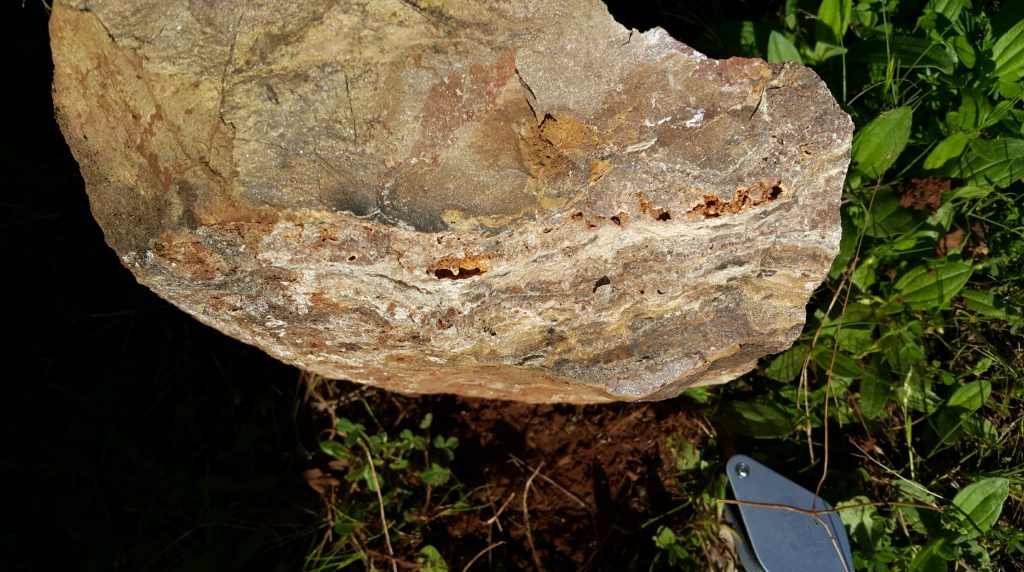
Objectives
- Fast-track confirmation and infill drilling of the Enfermarias and Preguica deposits to gain JORC-compliance for Indicated Resources.
- Systematic exploration of complete permit area, including areas with Tertiary cover.
- Drill test geochemical soil anomalies that were left untested by previous companies.
- Confirm the Cu, Sb, Ag and Au potential of the permit area.
- Complete a scoping study to confirm economic viability of developing one or more deposits.
- Evaluate existing data for along-strike extension of permit
Work programme
- Remote sensing study (completed)
- First pass geochemical campaign (completed)
- Acquiring data and setting up GIS database (in progress)
- Re-interpretation and re-logging of existing core (planned)
- Geophysics to test possible extentions of known mineralisation (planned)
- Confirmation drilling of Preguica (planned)
- Helicopter EM and magnetometer geophysics over whole license area, with spectrometric survey if possible (planned)
- Ground geophysical and geochemical surveys over target areas (planned)
- Drill-testing of targets (planned)

